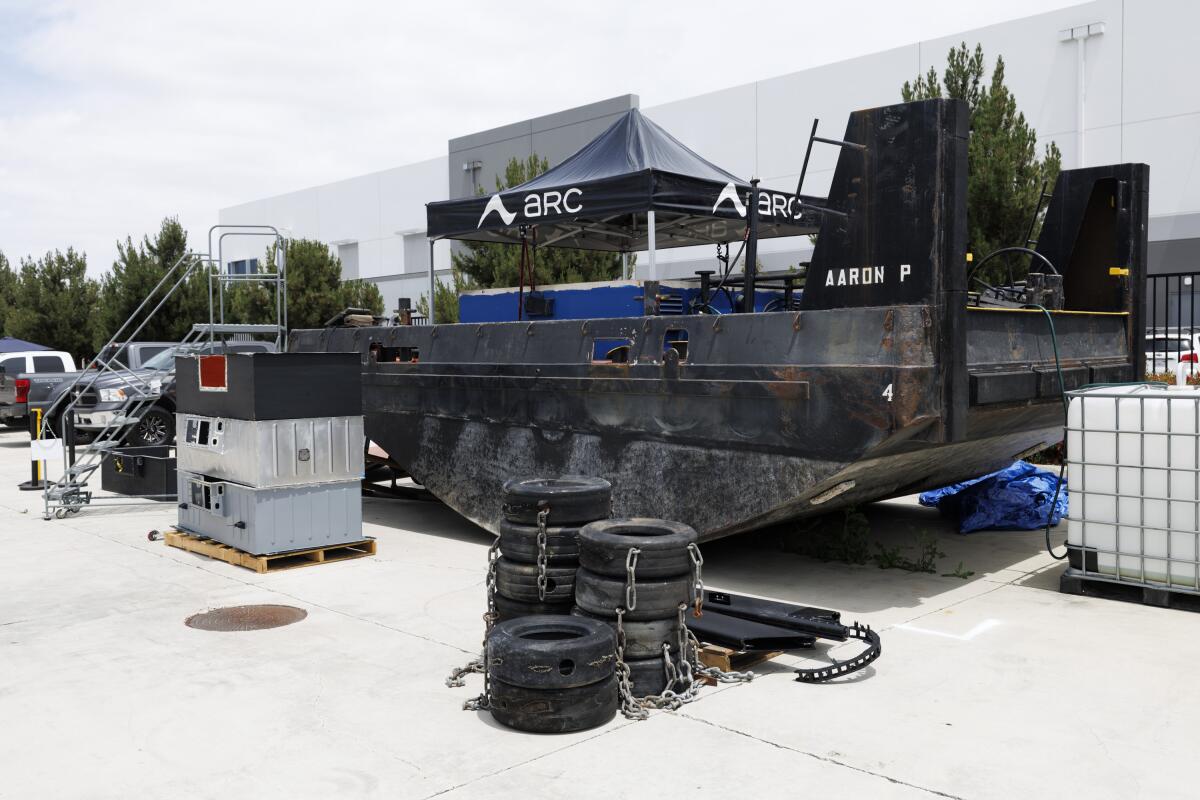Business
Japan’s Central Bank Loosens Its Grip on Easy Money Policy

No country in the world holds as much debt as Japan, which has well over $1 trillion in U.S. government treasuries alone. Even the slightest shift to Japan’s low interest rates reverberates well beyond its borders, with the potential to drive up rates globally.
So, when the Bank of Japan on Friday slightly loosened its grip on a benchmark government bond, it was big news for world markets.
The move was the latest signal that the country may revise its longstanding commitment to cheap money, meant to spur Japan’s laggard economic growth, as rising interest rates abroad have driven up inflation and weakened the yen.
In an announcement following a two-day policy meeting, the bank said it would take a more flexible approach to controlling yields on 10-year government bonds, effectively allowing them to slip above the current ceiling of 0.5 percent.
The move was intended to “enhance the sustainability of monetary easing” by “nimbly responding to both upside and downside risks to Japan’s economic activity and prices,” it said.
The change comes after months of speculation that the bank could move to tighten lending.
The bank’s ultra easy monetary policy is aimed at attaining demand-driven, sustainable inflation of 2 percent, a level policymakers believe would lift both corporate profits and wages in a virtuous cycle.
Inflation in Japan, the world’s third largest economy, has exceeded that target for over a year, hitting 3.3 percent in June. But the bank’s governor, Kazuo Ueda has questioned whether the price increases — which have been largely attributed to supply-side issues — are sustainable, leading most analysts to expect that a policy tweak would not happen until later this year.
In a statement, the bank said that it anticipated inflation would reach around 3 percent in fiscal year 2023, an increase from its previous forecast of 1.8. It cited “cost increases led by the past rise in import prices” as the main factor in the change.
Controlling bond yields has been a central element of Japan’s monetary easing policies.
The 10-year bond plays a key role in setting Japanese lending rates, which policymakers have sought to keep at rock bottom as part of their efforts to stimulate economic growth by making money cheaper for borrowers.
The effort has come at a high cost: to keep yields down, the bank has had to spend enormous sums on purchasing its own bonds.
The Bank of Japan has come under increasing pressure over the last year as other central banks, led by the Federal Reserve, began raising rates in an effort to battle inflation stemming from the pandemic and Russia’s invasion of Ukraine.
Inflation in Japan never reached the levels seen in the United States and Europe. But rising interest rates abroad substantially weakened the yen, as money flowed out of the country in search of higher returns. That worsened inflation in Japan, which is highly dependent on exports for food and energy.
Nonetheless, the bank stood firm, resisting both domestic calls to intervene and assaults by speculators hoping to make a fortune betting against Japan’s ability to defend its yield target.
Friday’s move is likely to put more pressure on the bank as markets seek to test its commitment to the new trading band, potentially leading to further loosening or even a complete abandonment of the policy.
But unwinding Japan’s monetary easing measures will not be quick or easy. Years of low rates mean that even small interest rate increases could be costly for households and businesses, which have come to rely on easy access to low-cost loans.

Business
This Southland boat company wants to electrify the Port of Los Angeles

An electric boat company with roots in Torrance is taking steps to bring battery-powered workboats and charging infrastructure to the Port of Los Angeles, where diesel-burning vessels emit tons of carbon dioxide.
Arc Boat Co., a Southern California startup that sells electric boats for recreational use, said it will open a research and development facility at the port in June.
The facility signals a move toward electrification at the nation’s busiest port and marks Arc’s expansion into the commercial sector.
Arc’s promise to deliver an electrified fleet of workboats comes five years ahead of a 2030 deadline set by the ports of Los Angeles and Long Beach to transition to zero-emission equipment.
The twin ports, situated on more than 10,000 acres on San Pedro Bay, rely on heavy-duty cranes, tugboats and trucks to move cargo. Replacing the roughly 2,000 tugboats in the U.S. with electric alternatives could prevent more than 1.6 million cars’ worth of greenhouse gas emissions annually, according to Arc.
“Across the entire marine industry, going electric makes an incredible amount of sense,” Arc co-founder and Chief Executive Mitch Lee said in an interview. “These boats don’t have fumes, and you can cut your operating costs substantially.”
Electric boats require minimal maintenance and zero fuel, an appealing combination for commercial operators who want to save money and consumers looking to enjoy the water, Lee said. Arc’s boats are also quieter and easier to maneuver than traditional boats, he said.
Co-founders Ryan Cook, left, and Mitch Lee sit on an electric boat at Arc Boat Co. on May 12, 2025, in Torrance.
(Carlin Stiehl/Los Angeles Times)
The electrification of vehicles on the water could soon gain momentum, said Petros Ioannou, an engineering professor at USC who researches transportation technology.
“The main reason for going electric is really the environment,” Ioannou said. “The question is whether they are able to solve the technological and logistical problems” presented by electric boats, including power, range and charging limitations.
Despite the challenges of building a battery capable of propelling a boat, several companies including Navier and X Shore are producing and selling electric vessels. Arc’s business currently revolves around recreational boats for water sports, starting at $268,000.
In a partnership with Portland, Ore.-based shipyard Diversified Marine Inc., Arc plans to retrofit a 26-foot-long truckable tugboat with lithium-ion battery packs and a 600-horsepower drivetrain. The vessel will be the first zero-emission tug to support operations at the Port of Los Angeles, Arc said.
Tugboats are an essential tool at the ports of Los Angeles and Long Beach, where they guide larger vessels and move equipment such as barges and cranes.
“Tugs run short, repetitive missions requiring high torque, and start and end at the same home base,” Arc said in a statement announcing its retrofitting project. “Not only does that make them well-suited to going electric, but doing so drastically reduces operating expenses.”
Teaming up with Diversified Marine allows Arc to launch its new workboat in collaboration with several entities that do business at the port, Lee said.
“Diversified already knows how to tap into the port operations and get this vessel to work,” he said. “We’re modernizing their tugboat and deploying it into the Port of L.A., and we’re able to provide charging infrastructure as well.”

A tugboat is retrofitted with an electric motor at Arc Boat Co. on May 12, 2025, in Torrance.
(Carlin Stiehl/Los Angeles Times)
Switching from diesel-powered to electric workboats can save commercial operators roughly 50% on maintenance and fuel costs, Lee said, adding that Arc’s new research and development facility will provide the groundwork to make the switch possible.
The company did not disclose how much money it was putting into the research facility and accompanying charging network, but said it probably will require an investment of less than $10 million.
The facility will sit within a 35-acre research campus operated by the nonprofit AltaSea. It will support prototype development of electric workboats, on-water testing and fleet deployment, Arc said. The company builds its battery packs out of a separate facility in Los Angeles.
“Decarbonization at our ports is a critical step to achieving real, substantive climate progress,” AltaSea said in a statement. “Arc Boat’s new R&D facility and charging infrastructure will help make the Port of L.A. a global model for sustainable maritime operations.”
Launched in 2021 by former Boeing and SpaceX engineers, Arc has a mission to electrify everything on the water, Lee said. Before co-founding Arc with fellow Northwestern alum Ryan Cook, Lee grew up in the Bay Area and frequently boated with his family.
Arc has received more than $100 million in investment funds from California-based venture capital firms including Andreessen Horowitz and Lower Carbon Capital, among others. The startup employs 170 people, including experts with backgrounds at electric vehicle companies Rivian and Tesla.
The company did not disclose its annual revenue, but said demand for its boats is high. Two models are available to be delivered nationwide, including the Arc Sport, designed for wake surfing and water skiing; and the Arc One, a luxury cruiser.
Arc is the only electric boat company to build its own battery packs in-house, Lee said.
Although assembly is done in Los Angeles, President Trump’s steep tariffs on U.S. trade partners — including a 145% tax on goods imported from China — have still presented a challenge. The tariff on China has since been reduced to 30%.
“We are definitely impacted by tariffs and the electric vehicle market has heavy ties to Chinese supply chains,” Lee said. “We’re also ahead of the curve and far more vertically integrated than most companies.”
With ambitions to build electric boats capable of hauling cargo and traveling long distances, Arc will need to stay at the forefront of battery development, Ioannou from USC said. Producing its batteries domestically may give Arc an advantage as tariffs disrupt global trade.
“Whether this space will progress in a rapid way will very much depend on the battery technology and availability,” Ioannou said.
“When you go from gasoline to electric, there are certain benefits that you get, but a lot of headaches too,” he said.
Business
The Stock Market’s Boomerang Month Has Put Investors in a Bind

The stock market is now higher than before President Trump’s broad and steep tariffs sent share prices into a tailspin. The 10-year government bond yield is now largely in line with where it started the year. On Tuesday, a widely watched measure of inflation nudged lower.
Judging from a snapshot of today’s financial markets, it would be easy to conclude that very little had happened over the last four and a half months.
As the administration has dialed down its trade offensive, delaying the worst of the tariffs announced on April 2 and promoting a long list of trade deals in the works, stocks have risen and the unnerving volatility in the government bond market — which Mr. Trump noted when he first began pausing his tariffs — has subsided.
On Tuesday, the latest reading of the Consumer Price Index showed a slower pace of inflation in April than economists had predicted, despite widespread concerns that tariffs could have sped up price increases.
The S&P 500, which came close to hitting a bear market early last month, is now up slightly since the start of the year, after a 0.7 percent gain on Tuesday.
Still, investors remained cautious, and complain that the outlook remains uncertain, with little clarity on what the final level of tariffs will be.
That leaves them in a tricky position, with many saying they have little conviction as to where the economy is headed but they cannot afford to wait on the sidelines and miss out on the possibility that tariffs will be lowered further and stocks will rise.
In the meantime, investors are still trying to parse how the tariffs that remain in place — including 30 percent tariffs on many Chinese imports — are affecting consumer spending and corporate profits
John Kerschner, a portfolio manager at Janus Henderson, said signs of tariff-fueled inflation are not likely to show up in the economic data for months.
“The market will wait with bated breath for those readings to make a determination of where we actually stand on tariff induced rising prices. Thus, market uncertainty will likely remain elevated,” Mr. Kerschner said.
The Federal Reserve is also in a wait-and-see mode, unwilling to keep lowering interest rates before the inflationary effect of the new tariffs is known. That’s because lower interest rates stimulate the economy and could add a further tailwind to inflation.
Market bets on when the Fed will next lower interest rates have gradually been pushed further out. At the start of this year, investors were anticipating that the Fed would lower interest rates at its meeting last week. Now, investors expect the first rate cut of the year to arrive at the September meeting.
Ellen Zentner, chief economic strategist for Morgan Stanley Wealth Management said the lower than expected reading in the Consumer Price Index on Tuesday “doesn’t mean tariffs aren’t impacting the economy, it just means they aren’t showing up in the data yet.”
“Wait-and-see is still the name of the game, and until that changes, the Fed will remain on the sidelines,” she added.
The longer uncertainty prevails, the more it becomes its own economic force, separate from the tariffs. Uncertainty means businesses hold off on making investment decisions and consumers pull back from spending, slowing economic growth.
Beneath the surface, that concern is still evident in the markets.
The Russell 2000 index of smaller companies, which are more at risk from a downturn in the economy, has risen from its lows, but remains 14 percent lower than its peak in November. The S&P 500 is only 4 percent below its February high.
The lowest-rated corporate debt continues to show some signs of strain.
Then there is the dollar, which has sent the most pointed signal of concern about tariffs. The dollar index, which measures the currency against a basket of its peers, has fallen 6.9 percent so far this year.
That is the dollar’s biggest slide since the end of 2022, when the Fed pivoted from raising interest rates, which had strengthened the dollar, to holding them steady.
But even now, as tariffs have de-escalated, the dollar has regained ground.
“As far as markets are concerned, there’s now a belief that the worst of the trade war has passed, and that the trend is now towards de-escalation,” noted analysts at Deutsche Bank said in a recent research note. But they also warned, “The U.S. is not out of the woods yet.”
Business
Google settles lawsuit alleging bias against Black employees

Google agreed to pay $50 million to settle a lawsuit alleging the search engine giant was racially biased against Black employees.
The settlement, which was reached after mediation and certified by a U.S. District Court judge in Oakland on Friday, covers some 4,000 Google employees in California and New York.
The original lawsuit came after a state agency, now known as the California Civil Rights Department, in 2021 began investigating Google’s treatment of Black female workers.
In 2022, former Google worker April Curley filed a lawsuit in federal court in San Jose alleging that she and other Black workers experienced systemic discrimination.
Curley, who worked at Google for six years, had been hired to conduct outreach and design recruiting programs with historically Black colleges.
However, her experience at the company quickly soured, she said, alleging that she was stereotyped as an “angry” Black woman, that she and other Black women had not been allowed to present during important meetings and that she was wrongfully terminated in 2020 after challenging internal practices.
Black workers were hired to lower-level jobs, paid lower wages, subjected to hostile comments and denied promotions, Curley and other Black workers who joined the proposed class-action alleged in their lawsuit.
The complaint said managers disparaged Black employees for not being “Googley” enough, comments the plaintiffs said served as racist dog whistles.
Throughout the litigation, the Mountain View-based company has maintained that it did not violate any laws.
“We’ve reached an agreement that involves no admission of wrongdoing. We strongly disagree with the allegations that we treated anyone improperly and we remain committed to paying, hiring, and leveling all employees consistently,” Google spokesperson Courtenay Mencini said in a statement Tuesday.
In addition to the monetary payout, Google has agreed in the settlement to analyze pay and correct differences based on race for the next three years. The company has also committed to maintaining transparent salary ranges and methods for employees to report concerns about pay or other practices.
And through August 2026, the company will not require employees to enter into mandatory arbitration for employment-related disputes, according to the settlement agreement filed last week in federal court.
-

 Austin, TX4 days ago
Austin, TX4 days agoBest Austin Salads – 15 Food Places For Good Greens!
-

 Education1 week ago
Education1 week agoIn Alabama Commencement Speech, Trump Mixes In the Political
-

 Technology1 week ago
Technology1 week agoBe careful what you read about an Elden Ring movie
-

 Culture1 week ago
Culture1 week agoPulitzer Prizes 2025: A Guide to the Winning Books and Finalists
-

 World6 days ago
World6 days agoThe Take: Can India and Pakistan avoid a fourth war over Kashmir?
-

 Education1 week ago
Education1 week agoUniversity of Michigan President, Santa Ono, Set to Lead University of Florida
-

 Technology6 days ago
Technology6 days agoNetflix is removing Black Mirror: Bandersnatch
-

 News6 days ago
News6 days agoReincarnated by A.I., Arizona Man Forgives His Killer at Sentencing















